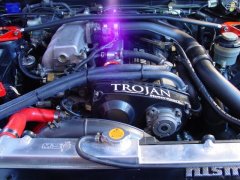Show Me Your Race Car Trailers
Announcements
-
Similar Content
-
Latest Posts
-
I actually have an aftermarket hanger, the detschwerks x1 hanger, but my dw420 has never really sat in it correctly, good to know I can just modify it a bit to suit. Yeah cheers man will definitely have a play with it and hope it solves my dramas.
-
Seriously though, it's the Shaft Autoservice high mount rear spoiler: https://az-style.shop/items/5ffaad5a72eb464137a6edb1
-
By Murray_Calavera · Posted
As GTS mentioned, it takes a bit of faffing, some fiddling and a little modifying. With the strainers, you can buy different styles. Some sit flat on the pump, some angle down. Here are some photos of mine, ignore the ugly welds lol. -
The smart thing is to actually locate the pump at the right point down the hanger, so that the strainer can stay sticking out at a right angle, but near the bottom. This is the perpetual hassle with retrofitting any different pump to the factory hanger. Some just go where you need it to, some need fiddling and faffing, and modifying of stuff.
-






Recommended Posts
Create an account or sign in to comment
You need to be a member in order to leave a comment
Create an account
Sign up for a new account in our community. It's easy!
Register a new accountSign in
Already have an account? Sign in here.
Sign In Now